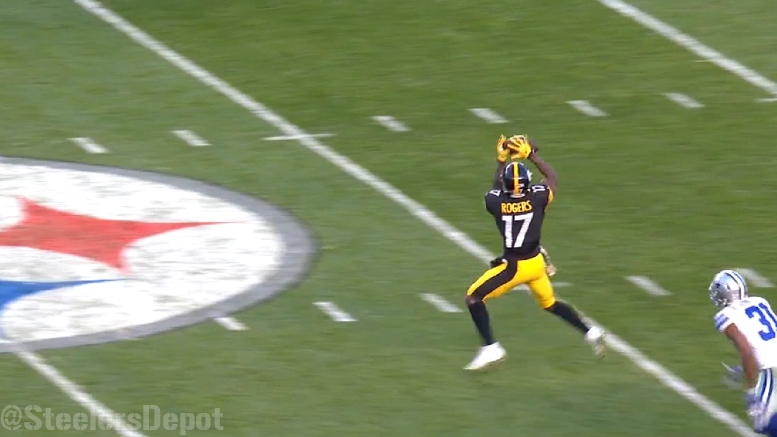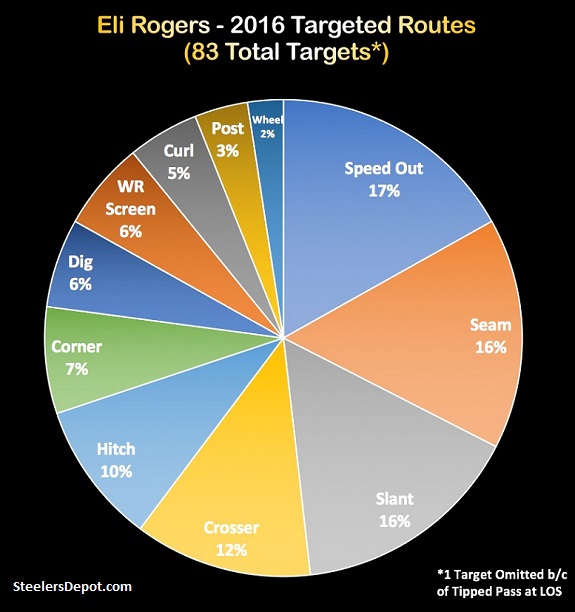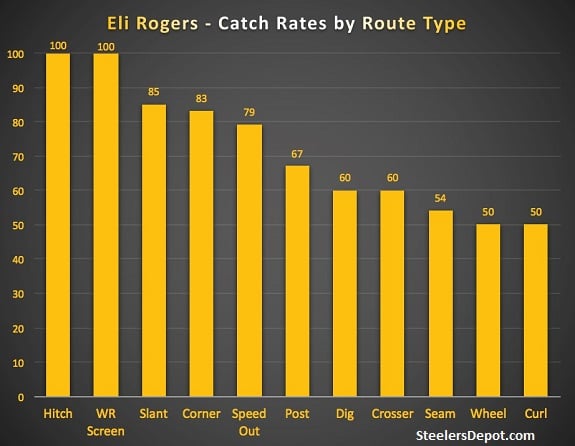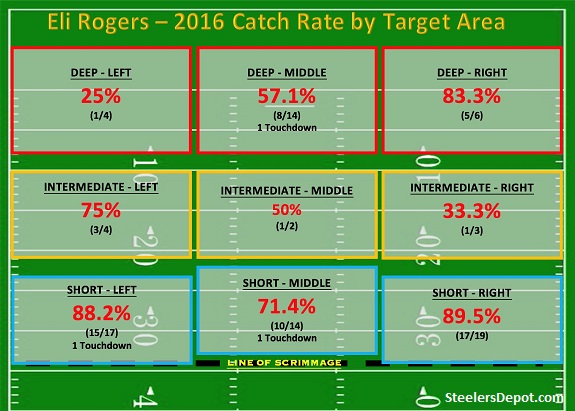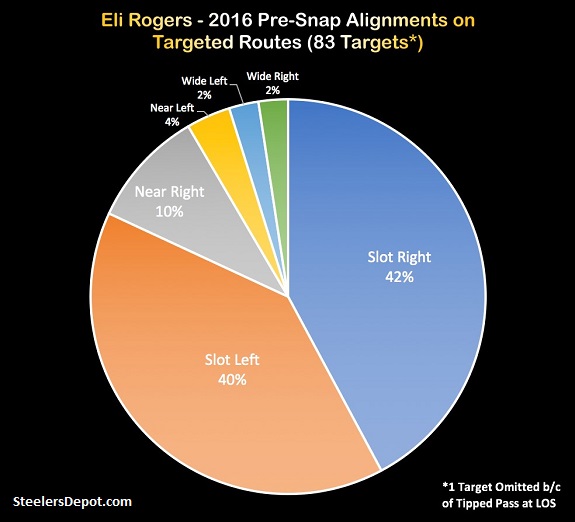I recently took a look at Martavis Bryant’s career targets and charted his catch rates by route-type and target area, as well as the routes he ran from various pre-snap alignments. Given the overall competitiveness of the Pittsburgh Steelers receiving corps this year, I have decided to conduct a similar analysis of all the receivers vying for a spot on the roster, in hopes of providing a more nuanced understanding of their production and usage in Todd Haley’s offensive system. Eli Rogers is the subject of today’s study:
Targeted Routes
Below is a chart depicting the percentage of each targeted route-type that Rogers has run, in relation to his overall total targets. As you can see, he ran a fairly diverse route-tree but also had a strong tendency toward running in-breaking patterns:
- 83 Total Targets: Speed Out (14 Targets), Seam (13), Slant (13), Crosser (10), Hitch (8), Corner (6), Dig (5), WR Screen (5), Curl (4), Post (3), Wheel (2)
Catch Rate by Route-Type
Although it is not entirely fair to assess a receiver based on the percentage of passes he catches out of his total targets (given that many different factors that are out of his control can cause an incompletion), it still is helpful in understanding how often a player generally “wins” when the ball is thrown his way. For reference, over Antonio Brown’s career, he records a reception on about 67% of his targets, whereas Martavis Bryant does so about 54% of the time, and Sammie Coates about 43%. Eli Rogers’ catch rate in 2016 was 72.7%; however, it’s important to keep in mind that the vast majority of his targets came on high percentage routes.
The charts below focuses on the individual route-types that Rogers has run, as well as his catch rate in different parts of the field, in order to give a more detailed perspective of his overall catch rate:
- Hitch (8/8), WR Screen (5/5), Slant (11/13), Corner (5/6), Speed Out (11/14), Post (2/3), Dig (3/5), Crosser (6/10), Seam (7/13), Wheel (1/2), Curl (2/4)
Pre-Snap Alignments
Lastly, I charted all of Rogers’ pre-snap positions on plays which he was targeted. A “Wide” alignment means that he started the play as the normal outside receiver; a “Near” alignment means that he was the most outside receiver but he was positioned much closer to the end man on the LOS (think outside receiver in a Bunch formation); and a “Slot” alignment obviously means that he was lined up in the slot with another receiver on his outside. I found this data interesting because it shows how Todd Haley used Rogers in various formations, as well as the frequency that he ran each route-type from a particular pre-snap location.
- Slot Right: 35 Total Plays – Speed Out (8), Seam (7), Crosser (5), Slant (5), Hitch (3), WR Screen (3), Post (2), Corner (2)
- Slot Left: 33 Total Targets – Seam (6), Slant (6), Hitch (5), Dig (4), Speed Out (4), Crosser (3), Curl (3), Wheel (1), Post (1)
- Near Right: 9 Total Targets – Corner (2), Crosser (2), Dig (2), Slant (2), Wheel (1)
- Near Left: 3 Total Targets – Curl (1), Corner (1), Speed Out (1)
- Wide Left: 2 Total Targets – WR Screen (1), Speed Out (1)
- Wide Right: 2 Total Targets – WR Screen (1), Crosser (1)

